The Science-Backed Routine I Use for Increased Productivity
Oct 22, 2022
I’m a big fan of productivity hacks. I love finding new ways to increase my output and get more done during the day. For over a decade, I’ve adapted my routine to match my circumstances. Like a game, there are additional variables to account for as I age. It was very different as an undergrad student with almost zero social life living in a hole in a wall. It is very different as a married man — coordinating sleep/work schedules, commute times, room temperature, adjusting to traveling, and more. If you’ve got kids, throw in an additional ten variables.
Recently I was reading a book called “Daily Rituals: How Artists Work” by Mason Currey, in which the author examines the daily routines of some of the world’s most creative minds. It contains profiles of over 150 artists, including painters, musicians, writers, filmmakers, and more. I am always curious about how creative greats lived their lives and if there were any routines or habits that I could adopt from the artists featured in the book.
The routines of these great artists were inspiring but a lot of them were so regimented that it required either waking up at wee hours of the day, staying up like an owl working until dawn, or completely giving up their social lives in pursuit of the art. All of which were non-starters for me.
That got me thinking — people should have solved this for the modern world, right? There should be science-backed routines that afford to not compromise on sleep, maintain a fairly decent social life, a job, and do not require an aberrant regime.
This pursuit led me to find Andrew Huberman’s work — a neuroscientist at Stanford who discusses how our brain and its connections control our behavior and overall health. Huberman analyzes behavioral tools that help us enhance our overall performance. I pieced together a routine that puts to practice the research on body rhythm, focus, sleep, and tools that aid with optimal performance. He believes there is an optimal routine backed by peer-reviewed studies.
tl;dr: for those who don’t want to read till the end, an ideal schedule looks something like this for someone who wakes up at 7am. This should work for anyone who wakes up between 5am - 9am.
7:00am — Wake up 👁
7:30am — Any activity outside where one can get sunlight in their eyes — this could be a walk, a run, jumping rope etc. ☀️
8:00am — Exercise — weight training or cardio for a minimum of 50 min. 🏋🏾♂️
9:00am — Cold shower 🚿
9:15am — Wim Hof/ Breath of fire/ Kapalabhati / Inhale focused breathing 🧘🏽♂️
9:30am — Focused work right after 👨🏾💻
11am — Break and coffee ☕️
11:15am — Focused work right after 👨🏾💻
12:30pm - Lunch 🥗
6:30pm (or whenever the sun sets) — Light in your eyes in the evening to offset any late device consumption 🚶🏾♂️
8:00pm - Warm shower 🚿
8:30pm - Dinner 🥗
10:30pm — Bed 😴
This run-of-the-mill schedule has a lot of science behind it. It took me a few years to piece this together — I finally feel like I am at my optimal performance after years of struggle.
Some bodily mumbo jumbo
Now, before we get to the why of this schedule, we need to understand some of the chemicals responsible for basic bodily functions; these will be relevant for the rest of the read.
Cortisol — Our body’s natural alarm. It is the main stress hormone that controls our mood, motivation, and fear. For most people this peaks around 8am.
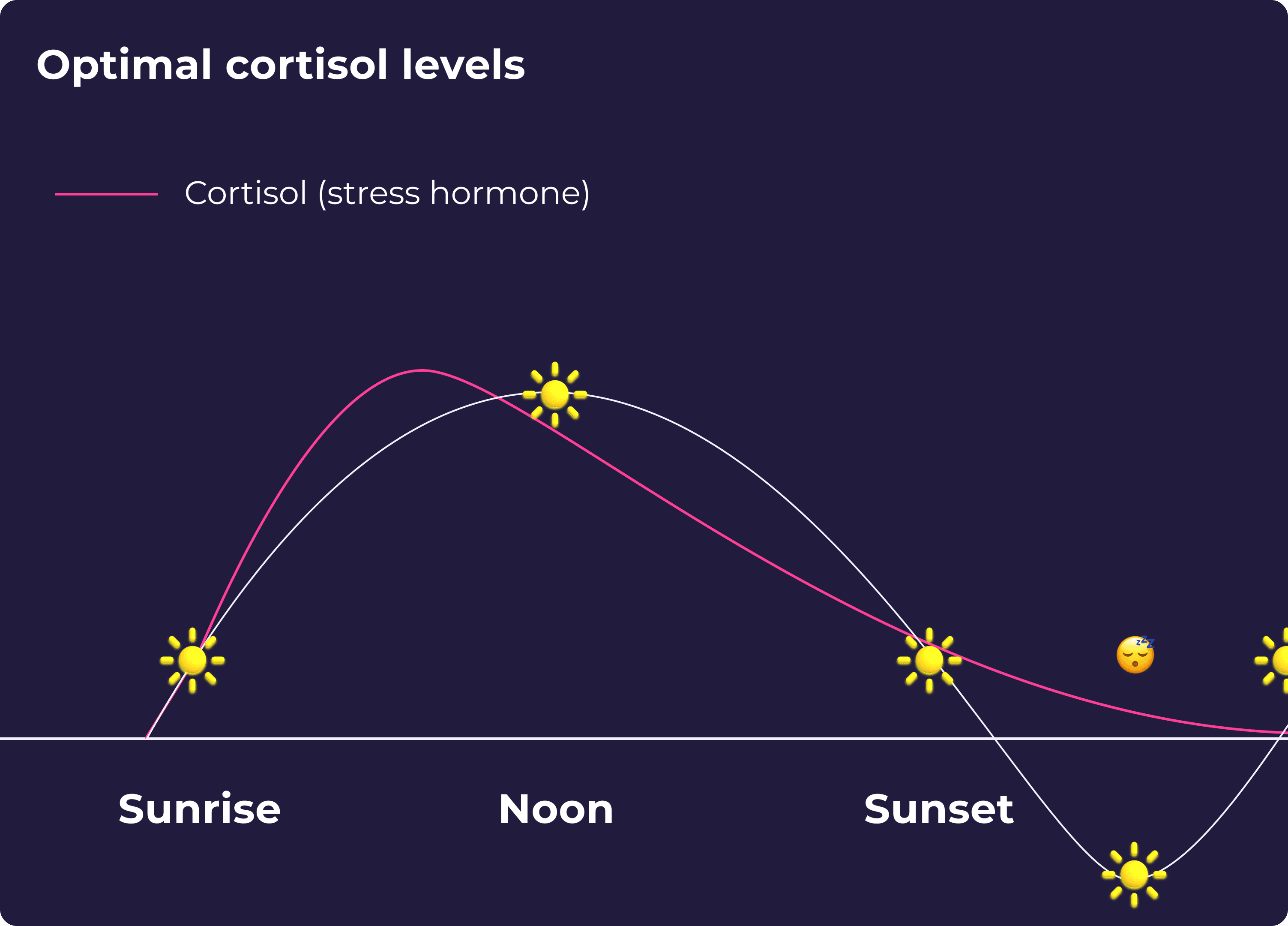
Melatonin — Melatonin is the hormone that tells us when to sleep by matching the sleep/wake cycle with day/night. It is produced in the dark, and regulates our bodily rhythm, or circadian rhythm.
Dopamine — A neurotransmitter that plays a critical role in one’s motivation, memory, pleasurable reward, cognition, and more.
Adenosine — It is a chemical that promotes sleep. They build up in our body the longer we are awake. As it builds, we become sleepier. Consuming coffee blocks receptors in our body that bind to Adenosine, thereby making us feel alert.
The science behind the schedule
How do we wake up?
One wakes up when the core body temperature starts increasing. Increasing core body temperature increases cortisol pulse — the stress hormone. This increase in cortisol pulses wakes us up. If we maintain a regular schedule, we might notice that we wake up before our alarms go off at the same time every day.

Viewing bright light immediately after waking up entrains the body to spike cortisol at the same time the next day, thereby training our internal clock.
Getting sunlight early
Getting 5-10 minutes of sunlight in the eyes modulates the timing of the cortisol pulse. It is important that this pulse happens as early in the day as possible.
When I say sunlight in your eyes, it does not mean you stare at the sun directly. That will probably damage your eyes. Instead, you angle yourself in a way where you are not staring at the sun directly, but there is enough light on your face.
Viewing sunlight early in the day triggers a series of responses in the body; the most important being signals to our brain which turns on an internal timer. This timer is a signal for the body to produce melatonin (a hormone that synchronizes sleep/wake to day/night cycles) 16 hours later.
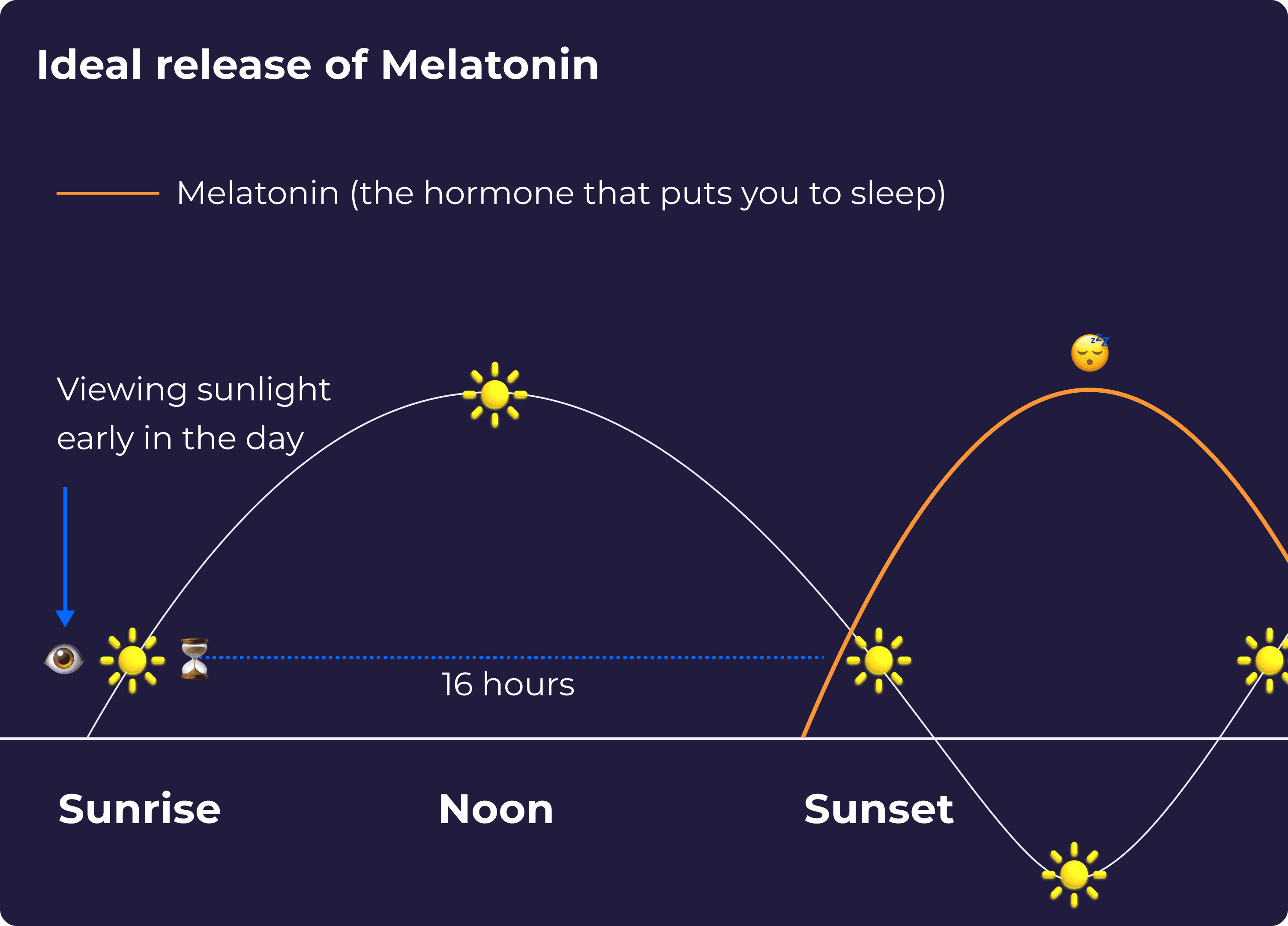
Now, let’s imagine you don’t get sunlight in your eyes. Your cortisol pulse is shifted a few hours. This leads to elevated cortisol towards the end of the day that hinders sleep for two reasons —
1. Cortisol is a stress hormone — it signals your body to be alert, thereby reducing sleepiness.
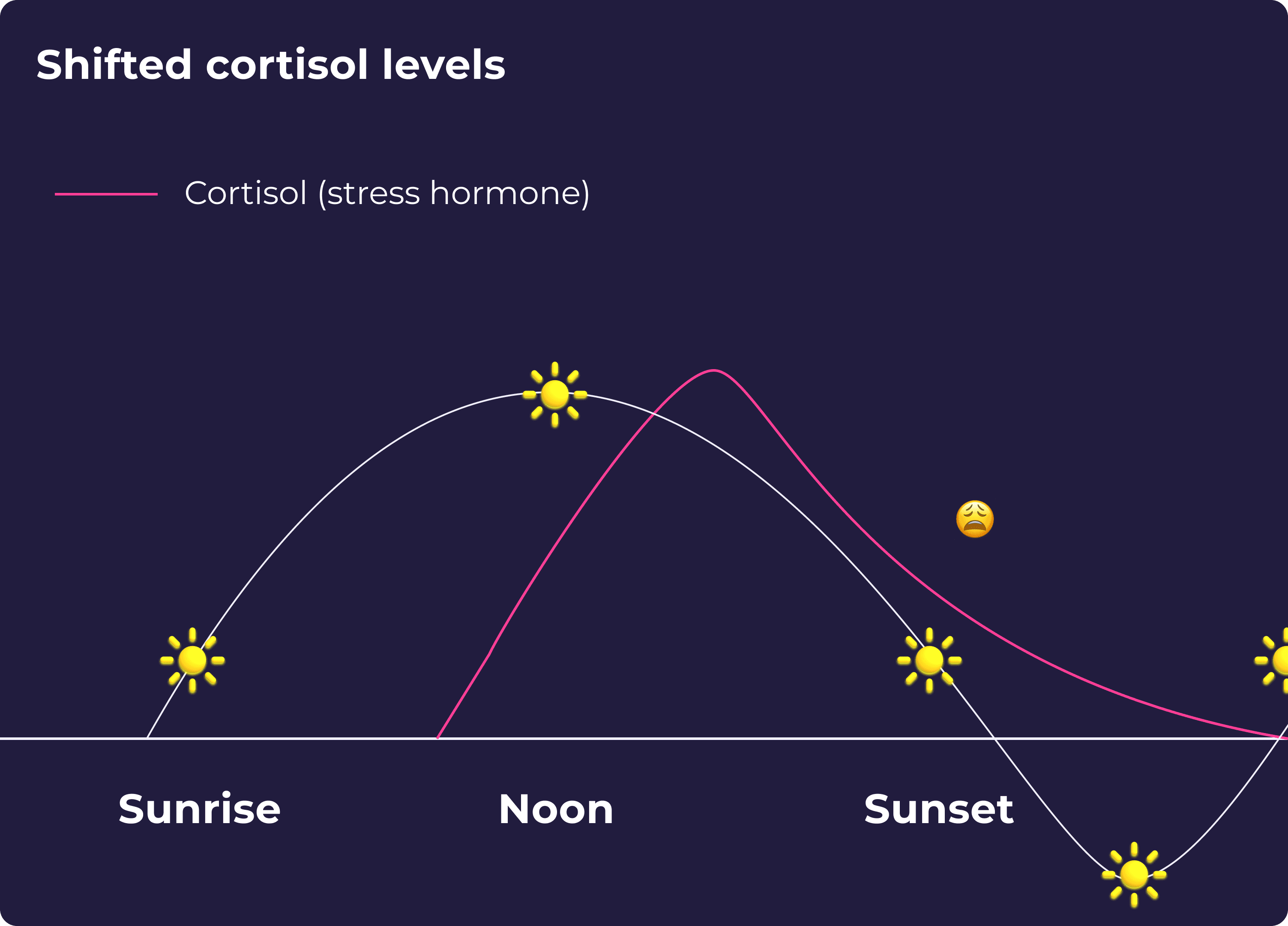
2. Your inner timer activates later, signaling your body to release melatonin later.

Exercise & cold showers early in the day
Exercising early in the day has two major benefits — waking you up and increasing motivation for the rest of the day. Early exercise affects adenosine & dopamine that is responsible for alertness and high-drive.
Exercise effects on Adenosine
As I highlighted earlier, Adenosine builds up in our body the longer we are awake. As it builds, we become sleepier. Exercising early in the morning helps clear this remnant of Adenosine from sleep. This makes us feel active & alert.
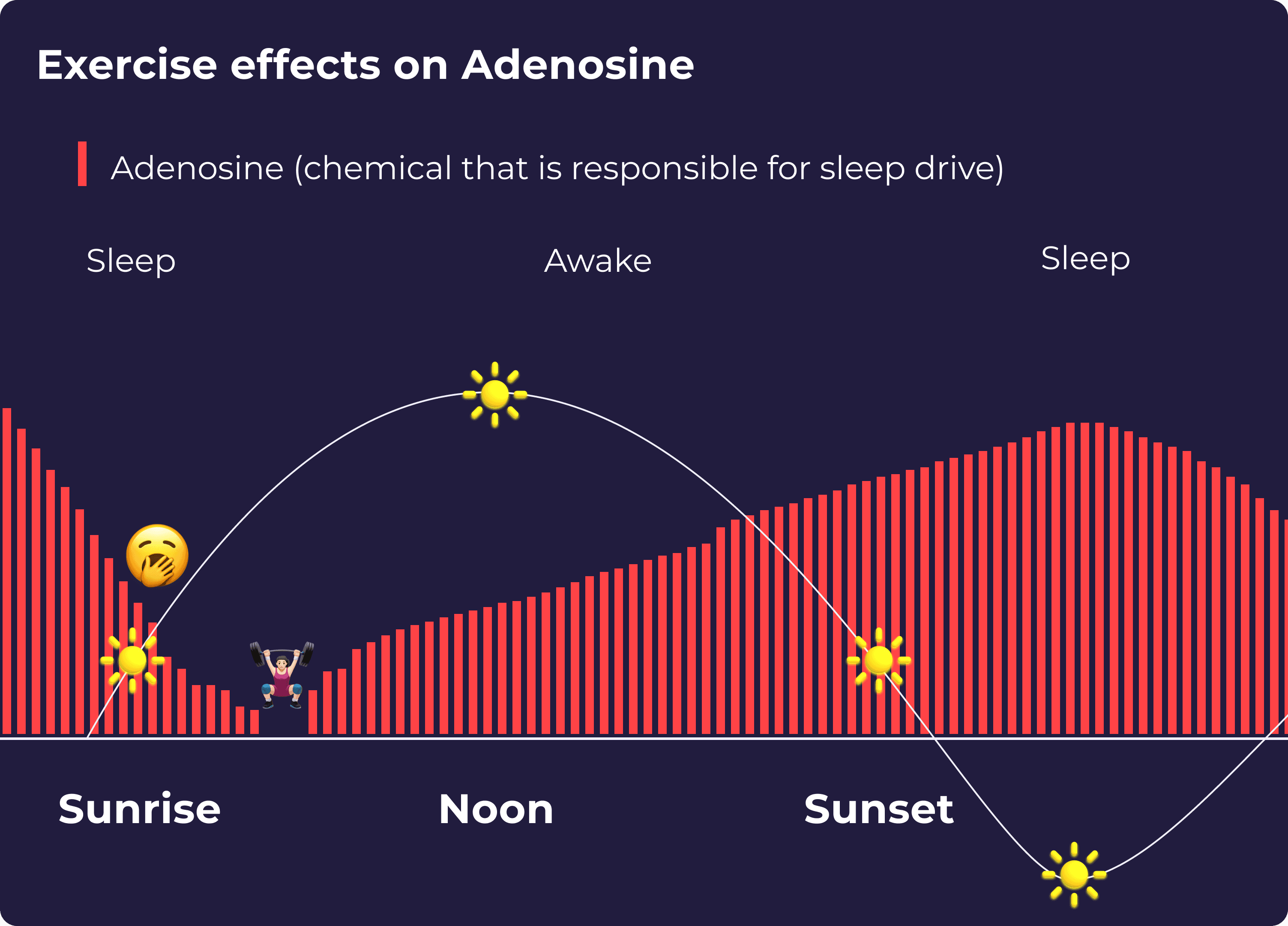
Exercise & cold shower effects on dopamine
In our day & age of continuous on-demand stimulating content, it has become very easy for us to get spikes in dopamine. The issue with the easy increase is that it leads to prolonged periods of low dopamine that makes us feel low & miserable.
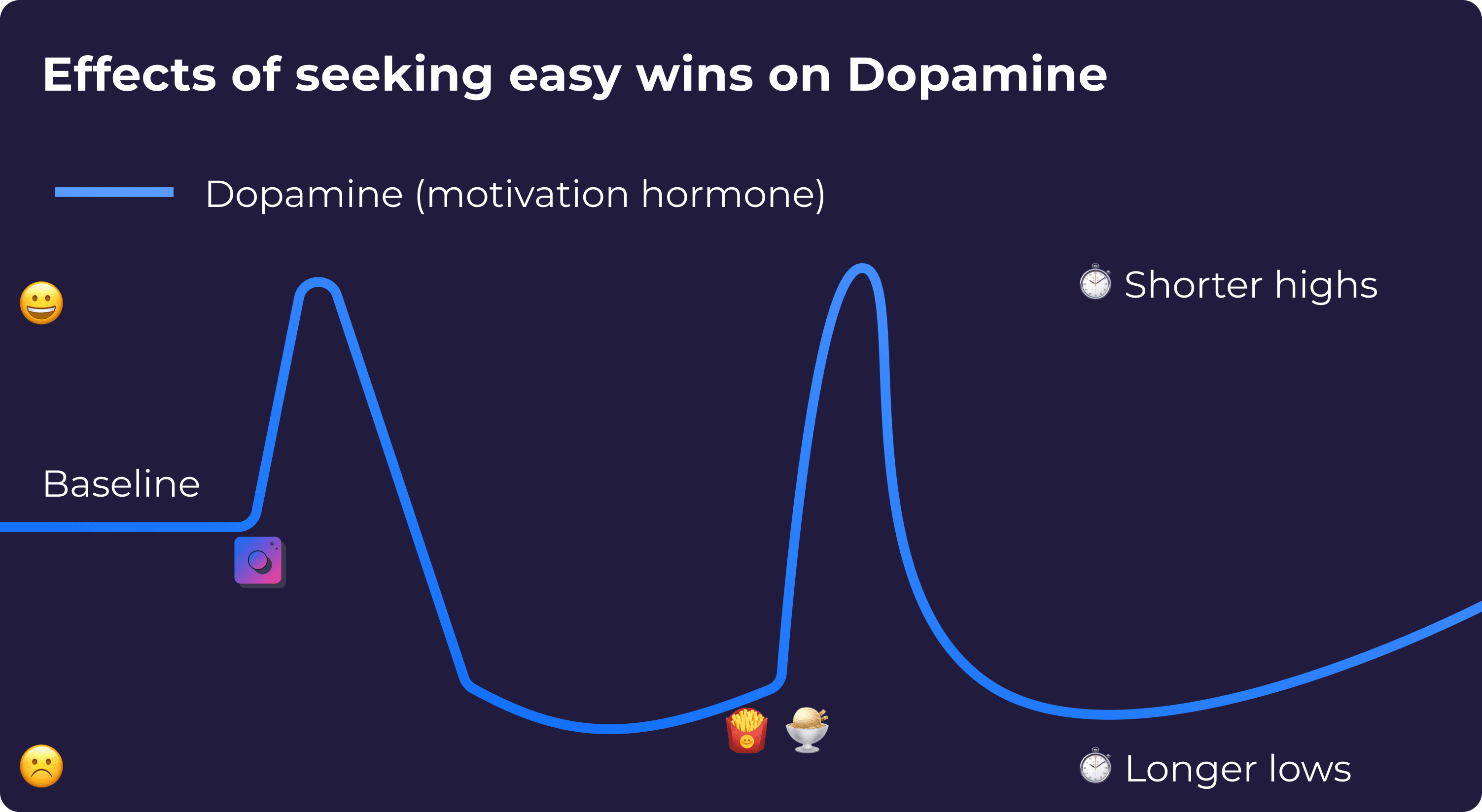
However, getting ourselves to exercise and immediately taking a cold shower after leads to a temporary dip in dopamine. It is the temporary uneasiness that leads to prolonged highs of dopamine that keeps us leveled and motivated throughout the day.

Cold showers
I’ll admit that cold showers were initially punishing. It tooks several months of dancing in the shower jumping away from cold water, but eventually I started enjoying the cold. In fact, I look forward to the cold every morning. One could ease into this process by having a shower in warm water, keeping the last 30 seconds for cold exposure. This did not work for me though. I could not get myself to shift to the cold after experiencing the warmth. The first 30 seconds is the hardest because immediately on exposure a part of our brain called locus coeruleus produces adrenaline and our forebrain is suppressed. This passes in a few seconds and once out of the cold we enjoy a long arc of dopamine. In her book The Dopamine Nation, Anna Lembke talks about how a patient battled cocaine addiction by taking ice baths.
Inhale-focused breathing exercises
There are different types of breathing exercises that help with improving focus, increasing calm, and bringing balance. For the sake of brevity, I’d speak only about inhale-focused breathing here. I plan on writing a more detailed article on the different types and how they help at different functions.
Right before I sit to work, I engage in an inhale-focused breathing. What does this mean? An inhale-focused breathing is where one inhales for longer than they exhale. This type of breathing helps increase focus and stimulation that sets me up for cognitive-focused work.
I inhale for 2s, hold for 2s, exhale for 1s, and hold empty for 1s. There are multiple variations to this that work equally well. One could just search on YouTube for “Wim Hof method”, “Breath of fire”, or “Kapalabhati”.
Delaying caffeine intake
I wait till 11am to consume caffeine — usually right after the first bout of focused work. I used to reach for coffee the first thing in the morning and found myself feeling sluggish around noon. This is called a caffeine crash. Why does this happen? Remember adenosine build-up? The chemical that promotes sleep? Coffee inhibits adenosine receptors from attaching. However, this does not mean that adenosine is not building in the body. Coffee only temporarily blocks the effects. When the effect of coffee wears off, adenosine build-up hits with a revenge and we feel a crash.

By delaying coffee until after exercise, we wait for all the adenosine build-up to clear. Also, we get the additional dopamine boost for a second round of focused work. This really optimizes our capacity to focus.
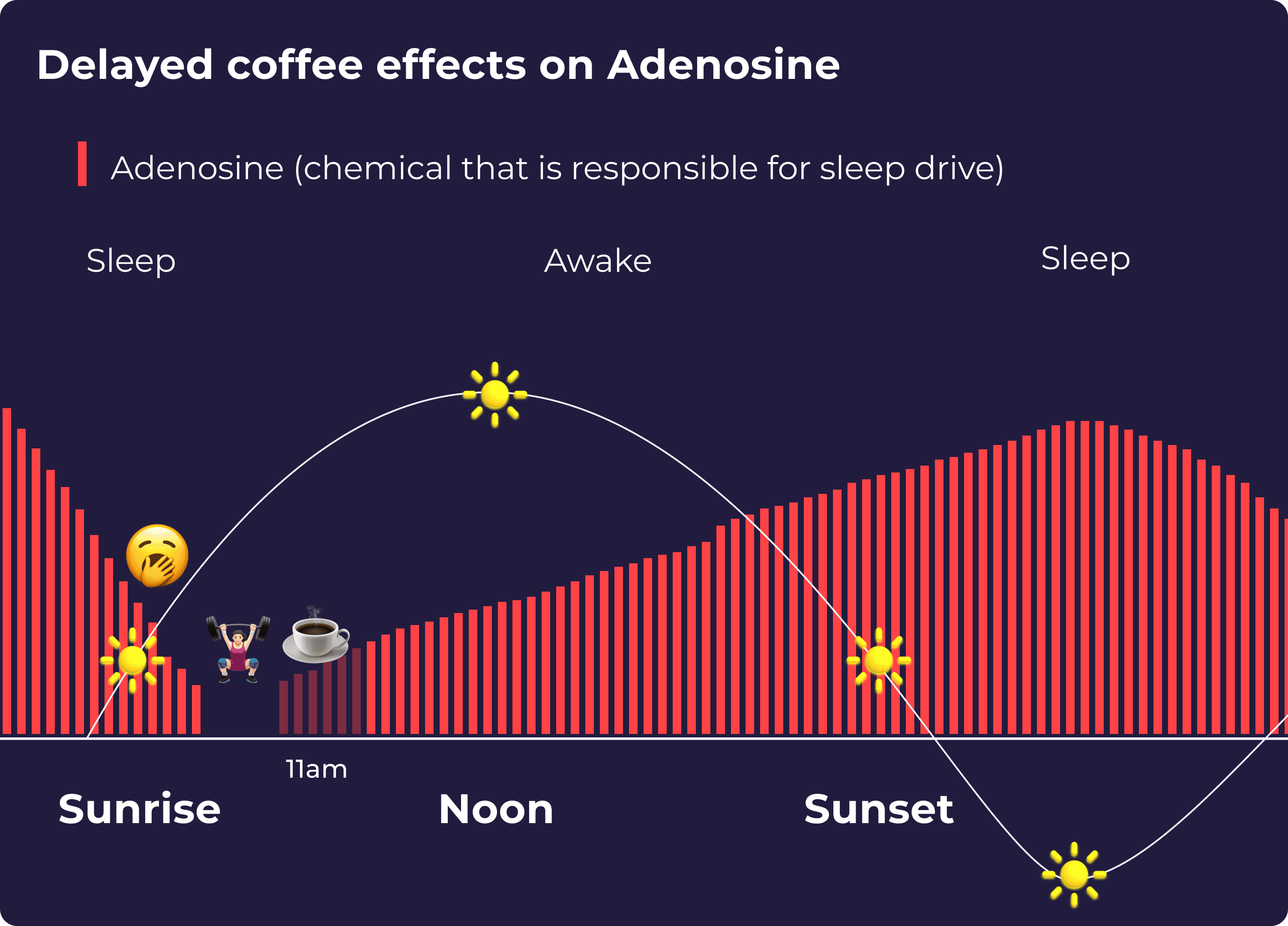
Warm showers at night
As I mentioned earlier, core body temperature needs to be high for us to be alert and low for easing into sleep. Warm showers help decrease the core body temperature, thereby reducing cortisol further. This calms our body readying it for sleep.
Putting it all together
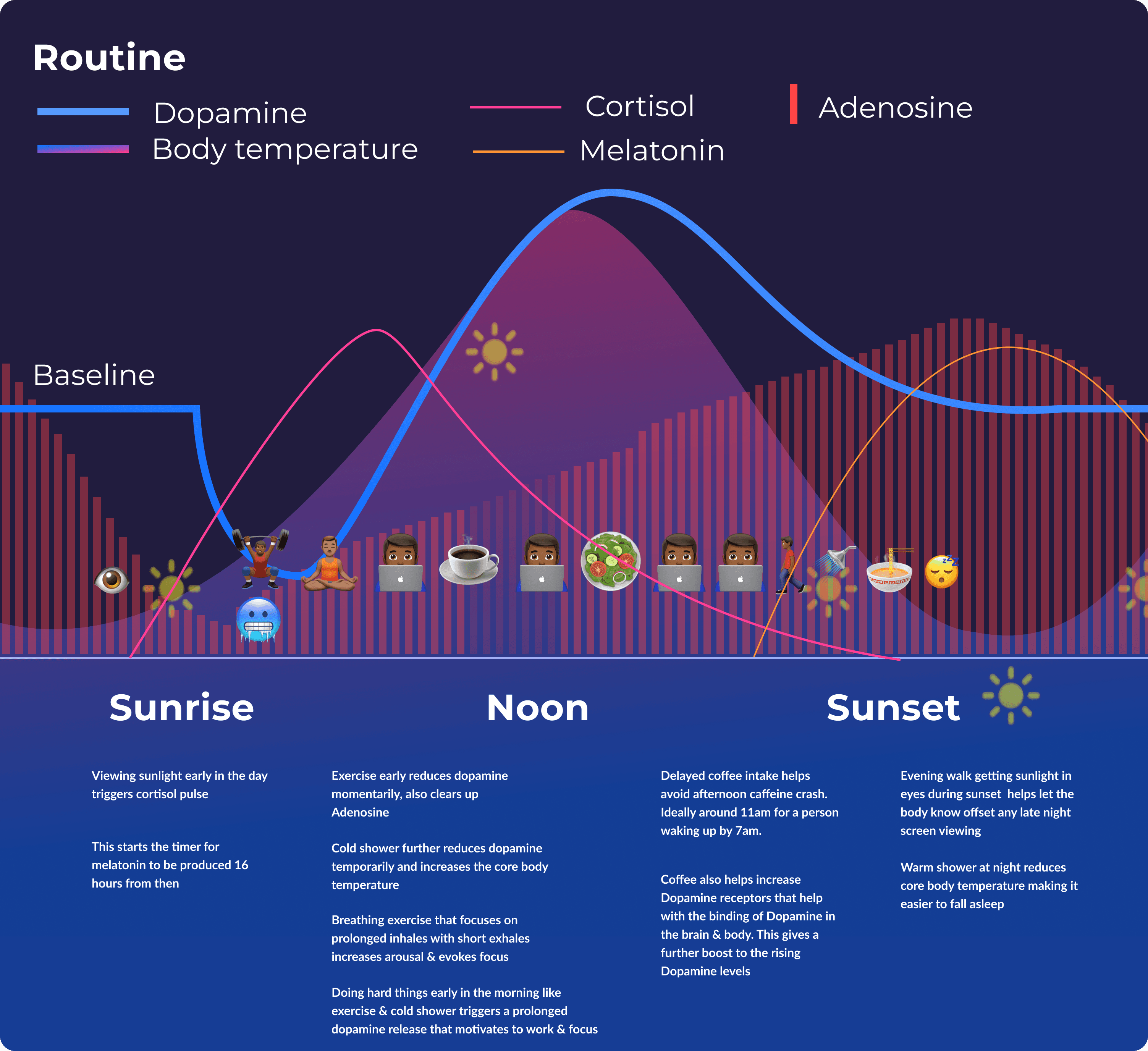
Sign up to my journal to have the digests sent to you directly!